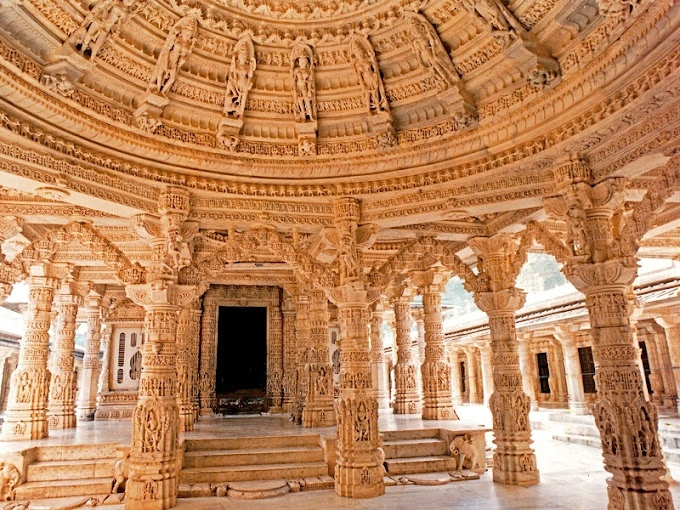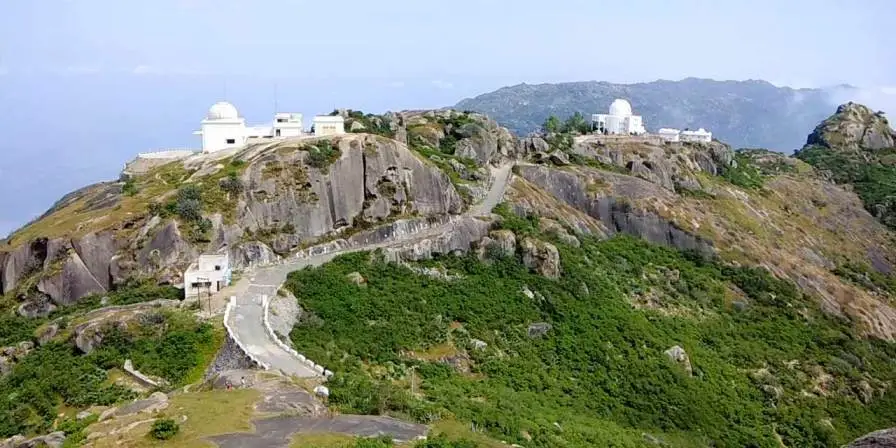Mount Abu in January: Weather, Places and Travel Tips
Visiting Mount Abu in January offers a delightful escape from the hustle and bustle of everyday life. The crisp winter air and clear skies make it an ideal time to explore this picturesque hill station. With daytime temperatures ranging from 12°C to 25°C, January provides a pleasant and refreshing climate for outdoor activities and sightseeing. The tranquil ambience and the lush green landscapes create a perfect setting for a peaceful retreat. Whether you are drawn to the serene Nakki Lake, the awe-inspiring Dilwara Temples, or the panoramic views from Guru Shikhar, Mount Abu promises an enchanting experience for nature enthusiasts and history buffs alike. Furthermore, the winter months see fewer tourists, allowing for a more intimate and immersive exploration of this charming destination.
What Are the Benefits of Visiting Mount Abu in January
During January, temperatures are comfortably cool, creating a refreshing environment perfect for exploring the hill station’s stunning natural beauty. The charm of Mount Abu’s lush green hills, tranquil lakes, and historical temples is enhanced by the clear skies and crisp air, making outdoor activities such as trekking, boating, and sightseeing particularly enjoyable. Additionally, January is less crowded than peak tourist months, allowing for a more peaceful and intimate experience with nature and local culture. Overall, a visit to Mount Abu in January promises a rejuvenating retreat filled with scenic vistas and memorable experiences.
Weather Conditions of Mount Abu in January
In January, Mount Abu experiences pleasant and cool weather, making it an ideal time for tourists to explore this hill station in Rajasthan, India. Temperatures typically range from around 5°C to 20°C, with chilly mornings and evenings, while afternoons remain comfortably warm. The region often sees clear skies, and the crisp mountain air adds to the charm of this picturesque locale. January is also relatively dry, with minimal rainfall, allowing visitors to enjoy outdoor activities and scenic views of the surrounding landscape. This month is popular for sightseeing, as the mild climate enhances the experience of visiting attractions like the Dilwara Temples and Nakki Lake.
Top Places to Visit in Mount Abu in January
1. Dilwara Temples

The Dilwara Temples are among the most exquisite Jain temples in India, renowned for their stunning marble architecture and intricate carvings. Built between the 11th and 13th centuries, these temples feature detailed sculptures and a serene atmosphere, making it a must-visit for both architecture enthusiasts and those seeking peace. The quiet, cool January weather creates the perfect setting to appreciate the beauty of these spiritual structures.
2. Nakki Lake

Nestled amidst the mountains, Nakki Lake offers a charming retreat with its crystal-clear waters and vibrant surroundings. Visitors can enjoy boating, take leisurely walks along the picturesque trails, or simply relax by the lakeside and soak in the views. The pleasant temperatures in January make it ideal for outdoor activities, and the sunset views from the lake are simply breathtaking.
3. Guru Shikhar

As the highest point in the Aravalli Range, Guru Shikhar stands at an elevation of 1,722 meters. The trek to the top is invigorating and offers panoramic views of the surrounding hills and valleys. The site also houses a temple dedicated to Guru Dattatreya. January’s cool climate makes the hike more enjoyable, allowing visitors to take their time and appreciate the serenity of the mountain.
4. Achalgarh Fort

Located approximately 8 kilometres from Mount Abu, Achalgarh Fort is rich in history and offers a glimpse into the region’s past. The fort has impressive ruins, including the ancient temples and the stunning architecture of the fort’s walls. History buffs and adventure seekers alike will appreciate the exploration opportunities this site offers. The fresh winter air enhances the experience as you wander through this historical landmark.
Book here Mount Abu Tour Packages.
5. Mount Abu Wildlife Sanctuary

For nature lovers, the Mount Abu Wildlife Sanctuary is a perfect destination. Spanning over 280 square kilometres, the sanctuary is home to diverse flora and fauna. January is an ideal time for wildlife spotting, with cooler temperatures prompting animals to be more active. Enjoy a safari or a guided nature walk to observe the captivating beauty of the sanctuary, including its lush greenery and unique rock formations.
What to pack for the January trip to Mount Abu?
1. Warm layers such as sweaters, jackets, and shawls for the cool mornings and evenings.
2. Comfortable walking shoes or hiking boots for exploring the hilly terrain and trekking.
3. Sunscreen and sunglasses for protection from the sun during daytime sightseeing.
4. Hat or cap to shield against the sun while visiting outdoor attractions.
5. Light, breathable clothing for the warmer daytime temperatures.
6. Medications and basic first-aid supplies.
Tips for travelling to Mount Abu in January
1. Pack warm clothes: January can be quite chilly in Mount Abu, so be sure to pack warm clothing including sweaters, jackets, and woollen accessories.
2. Check the weather forecast: Stay updated on the weather conditions in Mount Abu before you travel. This will help you prepare for any unexpected changes in the weather.
3. Plan outdoor activities: Despite the cold weather, Mount Abu offers beautiful outdoor experiences. Plan for activities like trekking, boating in Nakki Lake, and visiting the Dilwara Temples.
4. Book accommodation in advance: January is a popular time to visit Mount Abu, so make sure to book your accommodation in advance to avoid any last-minute hassles.
5. Stay hydrated: The cold weather can make you less likely to feel thirsty, but it’s important to drink plenty of water to stay hydrated at higher altitudes.
Conclusion
Visiting Mount Abu in January can be a wonderful experience. The weather is generally cool and pleasant, making it ideal for exploring outdoor attractions such as Nakki Lake, Dilwara Jain Temples, and the sunset point. However, it’s important to pack warm clothing as the temperatures can drop significantly, especially during the evenings and early mornings. Additionally, some outdoor activities or hiking trails may be limited due to the weather conditions. Overall, if you enjoy the serene beauty of nature and don’t mind the cooler temperatures, Mount Abu can be a great destination to visit.
Here you can also check our Mount Abu Tour Packages.
People also ask about Mount Abu in January
1. Is January a good time to visit Mount Abu?
Yes, January is a pleasant time to visit Mount Abu, especially for those who enjoy cool weather and want to avoid the summer heat.
2. Is it possible to do adventure activities in Mount Abu in January?
Yes, adventure activities like trekking, rock climbing, and camping are possible in January, though the cold weather means you should be well-prepared.
3. Is Mount Abu a good destination for families?
Yes, Mount Abu is a family-friendly destination with a variety of attractions suitable for all ages. Activities like boating on Nakki Lake, visiting the wildlife sanctuary, and exploring the temples can be enjoyable for both adults and children.
4. Are there any accommodations available during January?
Yes, there are numerous accommodation options in Mount Abu, ranging from budget hotels to luxury resorts. It is advisable to book your stay in advance, as January is a peak tourist season.
5. What is the best way to get around Mount Abu?
The best way to get around Mount Abu is by hiring a taxi or auto-rickshaw. You can also rent bicycles or scooters for more flexibility. Many attractions are within walking distance of each other, especially around Nakki Lake.
6. Is it safe to travel to Mount Abu during January?
Mount Abu is generally safe for travellers year-round, including in January. Just take standard precautions such as avoiding isolated areas at night, securing your belongings, and being cautious on winding mountain roads.
